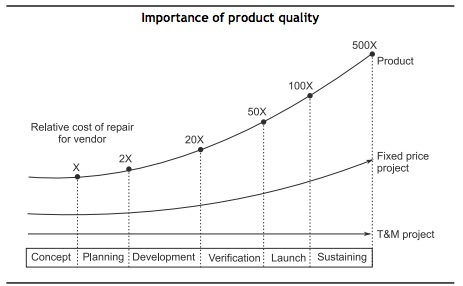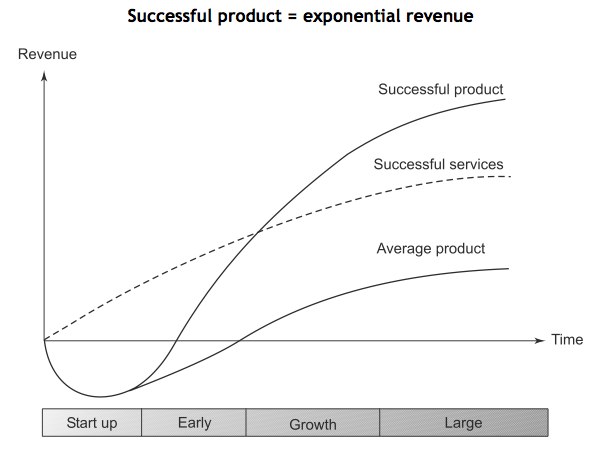In this blog post, we discuss ways and means to reach out to prospective clients, position the product, license and price it. However, the question that founders must ask and answer convincingly to themselves is the one posed above. When doing this, they must think like a buyer and question every assumption about the product’s value.
There are actually three parts to the question:
- Who is that ‘someone’ who may be interested in your product?
- What is in it for them that they will be willing to pay?
- How much will they pay?
Once this is clear at least at a high level, everything else will begin to fall into place. The answers will become more precise as the business grows, and they may also change with competition and shifting circumstances. That is why you must return to this basic query frequently.
Spider’s Web of Contacts
In early stages, founders do all the selling. They must talk to their target customer base early, with initial intent being to validate the product concept. Reach out through your contacts (past employers, family and friends) to those who can provide useful inputs. They in turn can introduce you to others. Set up meetings with thought leaders, but make sure you have a proper meeting agenda. Attend related conferences and industry meets, which present great opportunities to strike up discussions with people in the same fi eld, ranging from CEOs to sales or technical staff. You get to meet many of them in one go. At these forums, even senior executives have time to talk.
One has to learn how to get introduced to people and make an impact. Anand Deshpande, CEO of Persistent Systems, describes his approach, “Since I travel a lot, I meet many people at airports and on flights. I usually try to initiate some kind of a dialogue, exchange cards and have a short conversation. Airport encounters are not conducive to making fancy power-point presentations, so the positive impression has to be generated through something you said or your personality. The conversation has to be two way, and the person should gain something from you. It could be some information, useful tips, advice or an interesting observation.”
Anand also emphasizes the important of generating interest and then building trust. He notes that, “The biggest challenge for an entrepreneur is in getting people to meet you. That can happen through a reference from a mutual contact or your credentials (the academic and software community is closely knit).
People are more approachable at events like technical conferences because they see you as a colleague. They are also more receptive if you have a really compelling product or service to offer. People give work only when they trust you and if the timing is right. Once you get clients, you must take care not to let them down. Trust eventually goes beyond individuals and becomes a brand for the service or product.”
Take every opportunity to build a ‘web of contacts’. The web is woven from the inside out, expanding as you meet more people. Some of them may become future clients, advisors, partners or maybe even investors. Once you have a satisfied customer, get them to recommend at least two other industry contacts. Since your ‘n’ contacts can potentially refer you to ‘n’ more, this web can grow exponentially (square of n) over time if it is managed well.
Some entrepreneurs are very good at networking and take every opportunity to get introduced to people. They follow up on meetings by sending a discussion summary, or just a thank you note. Key contacts get regular emails with significant updates, like a new website, press coverage, or major client win. This communication should not be too frequent to a point where it becomes a nuisance. Surprisingly, there are many founders who don’t keep time commitments, and are poor at responding to e-mails or maintaining contact. Some respond selectively, only to those whom they think will be of value to them.
It is important to be gracious in business. Someone’s ability to help is often a matter of timing. It may be weeks, months or even years before something materializes from a discussion that you had. If you are in regular touch, your time will come.
A venture is said to be in stealth mode while the product is being conceptualized or developed. In those early days, you should be careful to avoid divulging information to anyone who can become a potential competitor. If you plan to get into detailed implementation and technical discussions with anyone other than investors and prospects, don’t hesitate to ask them to sign a Non-Disclosure Agreement (NDA).
Write down and then practice an ‘elevator pitch’ about your product and company. ‘Elevator pitch’ is a US reference to being able to communicate your product concept crisply to a prospect in the same elevator, in the short time between fl oors. There will be many opportunities, where you will have just those few minutes. So, learn how to distil your product objectives and value in a few sentences.
Anchor Customers
The first few customers are hard to get. There is a temptation to sign up anyone willing to pay. However, you must take a long term view and instead focus on signing the right clients. Approach users and companies that best represent your target audience—let’s refer to them as ‘anchor customers’. An ideal anchor is someone whose name will provide confi dence to future prospects, and whose acceptance of your product establishes your technology leadership.
Anchors may sign up because they are risk-takers, or they have a pressing business need, which your solution can address. Remember that they are investing in you by taking the risk of signing on for an untested product from an unknown company. They will spend time and resources on deploying your software and surviving the inevitable teething problems.
You can acknowledge their support by being fl exible on the pricing. At that point, you probably wouldn’t have decided on the price. For instance, offer to waive license fee for the fi rst 6 months. Say that you will quote them the list price that you will charge other customers, and will let the anchor decide their price.
Anchors as Investors
If you get lucky, the anchor may be convinced that your product can deliver real value, and will support you all the way. They may even pay your full fees, but ask for extensive customization. Some anchors may even want to invest in your company. This can happen with large companies who see the potential for significant financial benefi ts from your product, either through internal deployment, or because it fits into their strategic roadmap in some way.
Both are good situations to be in, but you must assess the following:
- Weigh the benefit of customization for an early client against the potential delay to the main product.
- Product and source code ownership must be retained unambiguously by your company.
- Any angel investment proposal should be evaluated on its merits. Do not trade equity just because you are getting a major customer. Their investment may limit your market by turning off the anchor’s competitors.












